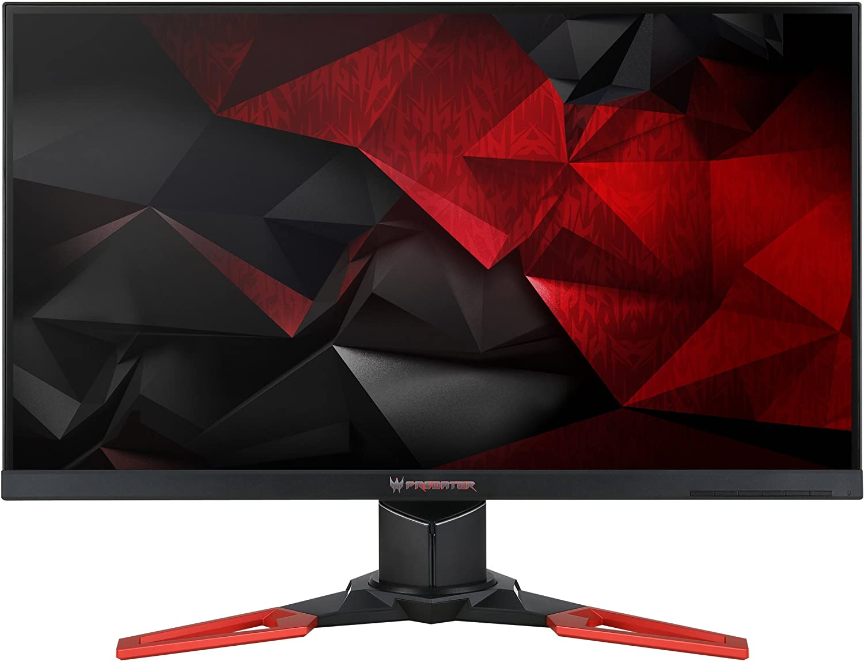
Nvidia G-SYNC
Here’s everything you need to know about G-SYNC Ultimate and the differences between it and the newly-announced G-SYNC and G-SYNC Compatible.
What is G-Sync?
As noted in our previous feature, NVIDIA’s G-SYNC is a hardware-based technology that manages and manipulates the vertical blanking interval of a display panel in order to create a smoother gaming experience. It’s intended to reduce and eliminate a phenomenon called screen-tearing.
In the past, NVIDIA promoted and positioned G-SYNC as a single, binary qualification. Either a monitor was compatible or it wasn’t.
In 2019, NVIDIA has expanded the program to include three categories that each reflect a different level of G-Sync functionality.
A table that roughly outlines the differences between the three types of G-Sync experience can be seen below.
 Credit: Nvidia
Credit: Nvidia What is the difference between a G-SYNC and G-SYNC Compatible Monitor?
The difference between a G-SYNC and G-SYNC Compatible monitor is simple. The former represents more-or-less the experience that G-SYNC has previously been known for. If you’re using a G-SYNC monitor, you can expect reduced input lag and screen tearing on variable refresh rate outputs.
Then, G-SYNC Compatible monitors refer to any monitor that provides what NVIDIA call a ‘Validated Experience’. By this, they mean that NVIDIA has gone and tested the monitor in question and found that these it doesn’t produce any blanking, pulsing, flickering, ghosting or other artifacts during variable refresh-rate output.
 Credit: Nvidia
Credit: Nvidia NVIDIA’s testing for G-SYNC Compatible monitors also involves making sure the monitor can deliver a variable refresh rate range of at least 2.4:1 and whether these capabilities are enabled by default. If it meets the above criteria, NVIDIA will stick a badge on that monitor that lets consumers know its G-SYNC Certified.
Nvidia have a full list of G-SYNC Compatible monitors on their website here.
What is a G-SYNC Ultimate Monitor?
 Credit: Nvidia
Credit: Nvidia As the chart above lays out, G-SYNC Ultimate monitors are those that NVIDIA rates as offering “the best experience” when it comes to image quality, color accuracy, variable refresh rate performance and high dynamic range with over 1000 nits of brightness.
Like G-SYNC monitors, Ultimate displays are also required to have passed over 300 compatibility and quality tests. They also incorporate a more advanced processor.
Who makes G-SYNC monitors?
These days, most brands who play in the gaming monitor space tend to have at least some G-SYNC monitors on their roster. This includes:
 Credit: Dell
Credit: Dell - Acer
- ASUS
- AOC
- Dell
- HP
- Lenovo
- MSI
- LG
- ViewSonic
- BenQ
- Gigabyte
- Razer
- Samsung
Are G-SYNC monitor worth it?
Look, if you already have a PC with an NVIDIA-based graphics card in it, you're probably want to pair it with a G-SYNC monitor to get the most out of what your hardware can deliver. The two components are literally designed to work together.
Is G-SYNC available in laptops?
 Credit: Nvidia
Credit: Nvidia Yes! In 2019, Nvidia worked with a number of OEMs to bring the G-SYNC experience to laptops from Acer, Alienware, ASUS, Dell, Gigabyte, HP, Lenovo, MSI, Razer and Samsung.
What's the difference between G-SYNC and FreeSync?
Rather than rely on separate NVIDIA-approved hardware, Freesync uses the DisplayPort interface present on most monitors to try and solve screen-tearing and enable synchronized refresh rates.
Again, the biggest difference here is that FreeSync requires no specialized hardware to be implemented by vendors - which means its found in more monitors and those monitors are often cheaper to boot.
Which G-Sync monitor should I buy?
 Credit: Acer
Credit: Acer While G-SYNC compatibility is an important spec to consider when buying a new monitor, it's rarely the most significant nor is it a good place to start your search. Personally, I prefer to start with things like size, resolution and refresh rate. Then, once you know what you're looking for there, you'll be better equipped to navigate the crowd of tech brands currently shilling G-SYNC gaming monitors.
These are our recommendations, ordered from least to most expensive:
- ASUS TUF Gaming VG259Q - $300-$400
- Dell Alienware 25 Gaming Monitor - $500-$700
- MSI Oculux - $700-800
- Acer Predator XB271HU - $900-$1000

















